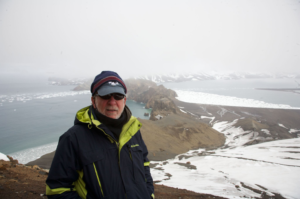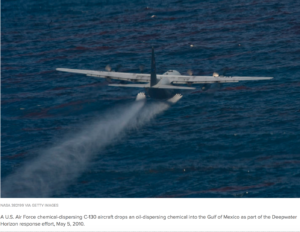
Ron Naveen found his calling counting penguins in the Antarctic three decades ago, lured by the iconic creatures that waddled upright like drunken butlers but swam like dolphins under pristine ice shelves that stretched untouched for thousands of miles. Over the years Naveen created a small nonprofit called Oceanites, named after the aerobatic seabird, and he built a network of colleagues, volunteers and other scientists who helped document penguin population data along the Antarctic Peninsula—until recently one of the fastest warming regions in the world.
Today, Oceanites has partnered with New York’s Stony Brook University to develop new cutting-edge satellite mapping technology that will allow scientists to further study the populations of penguins that thrive in the brutally cold Antarctic winters made famous in documentaries like March of the Penguins and The Penguin Counters. Oceanites released its State of Antarctic Penguins 2018 report today—World Penguin Day—that provides the most detailed documentation yet of what is happening to penguins in on the world’s seventh continent. And the results continue to be concerning.
Two of the three species of penguins, Adelie and chinstrap, have declined significantly in numbers in the fast-warming Antarctic Peninsula, while a third species, the Gentoo, has risen. Why? No one really knows. It could be a drop off in the food supply, or a changing environment and melting ice. But Naveen’s band of penguin counters believe these noisy and curious flightless seabirds are crucial to understanding what will happen to humanity as the climate rapidly changes and the polar regions pour trillions of gallons of fresh water into the oceans.
“It is through these changes in the Peninsula that we hopefully will better understand how future generations of mankind may or may not adapt to a similar amount of warming in our own backyard,” Naveen says. His organization is working with scientists to come up with new ways to track what’s happening to our fitful feathered friends, trying to explain how rapidly warming regions of Antarctica are affecting penguins—and our future.
There is good reason to worry, since 90% of the world’s ice and 70% of the world’s fresh water are on this largely unexplored icy continent. If the ice melts, penguins and humans will suffer the consequences. So far, recent scientific studies have not been optimistic about the future in the frozen south. Reports show 10% of Antarctica’s massive glaciers are in full retreat, and new research shows melting is taking place underneath the ice sheets due to changing ocean currents, creating a potentially disastrous warming feedback loop.
This is not good for penguins—or us. Scientists are desperately trying to figure out what is happening to the mysterious frozen world that we know so little about. Because as Naveen says, what happens to penguins will happen to us. And that’s a story worth figuring out.
Rocky Kistner is an advisory board member of Oceanites.

